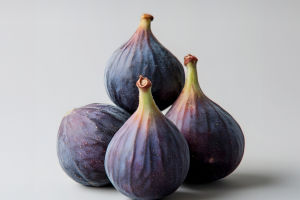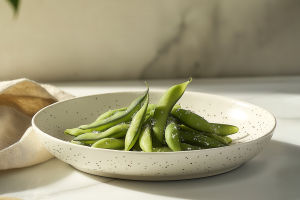We love discovering unusual fruits, and Kiwano (Horned melon), also called Kiwano, is one that really stands out. Imagine a fruit that looks like it came from another planet—bright orange-yellow skin, covered in little spiky horns.
It might look intimidating, but this fruit hides a refreshing, jelly-like inside that’s full of surprises. Ready to explore it with us?
Where Does Horned Melon Come From?
Horned melon is originally from the Kalahari Desert in Africa, where it adapted to dry, hot climates. Over time, people started growing it in places like New Zealand, the U.S., Australia, Germany. Because it handles heat and drought well, it’s become popular in places with less rainfall. It’s also known as a short-day crop, meaning it grows better when daylight hours are shorter.
It Looks Wild—But What’s Inside?
From the outside, the fruit looks like something from a sci-fi movie. Its skin is firm and covered with soft spikes, giving it the “horned” name. But when we slice it open, we find a green, jelly-like center filled with flat, soft seeds. This pulp has a texture similar to cucumber, and some say it looks like a cross between jelly and chia seeds.
What Does It Taste Like?
The flavor of horned melon is subtle and refreshing. Many say it tastes like a mix of cucumber, kiwi, and banana, with a slightly tangy note. It’s not too sweet, so if we’re used to tropical fruits like mango or pineapple, it might feel mild at first. But the more we eat it, the more we get used to its clean, cooling flavor—perfect for a hot day.
How Can We Eat It?
Horned melon is super easy to eat. Just slice it open and scoop out the jelly-like pulp with a spoon. We can eat it fresh, toss it into fruit salads, or blend it into smoothies for a tropical twist. Some people mix it with lemon juice and sugar to enhance the flavor. It can even be added to yogurt or used as a pretty topping on desserts. In New Zealand, it’s sometimes used in salad dressings or drinks.
The Health Benefits Are Real
Not only does horned melon look cool, but it’s also good for our body. It’s rich in vitamin C, which helps keep our immune system strong, and it contains dietary fiber, which is great for digestion. The fruit is also low in calories and high in water—so it’s a great snack if we want something light and hydrating. Plus, its antioxidants may help support clear skin and restful sleep.
Is It Safe for Everyone?
Horned melon is generally safe to eat. However, since it has many seeds and a unique texture, it’s a good idea to start with a small amount if we’re trying it for the first time. Some people find the flavor unusual at first, but it grows on us quickly. And because it’s so full of water, it’s also a nice option when we need to stay hydrated.
How to Choose and Store It
When buying horned melon, look for one that’s bright orange-yellow with firm skin. A little softness is okay—it means the fruit is ripe. At home, we can store it at room temperature if we’re eating it soon, or put it in the fridge for a longer shelf life. Just don’t wait too long—its flavor is best when it’s fresh.
Let’s Try Something New, Lykkers!
Lykkers, horned melon might look fierce on the outside, but it’s full of fresh, juicy surprises inside. It’s a refreshing and healthy choice that adds something unique to our fruit routine. We can scoop it out and enjoy it with a spoon, blend it into a smoothie, or simply chill it for a cool snack on a hot day.
So the next time we spot this golden, spiky fruit at the market, let’s not hesitate. Give it a try and see what the buzz is all about. Have you already tasted horned melon? Share your experience with us—we’re always excited to hear your tasty discoveries!


